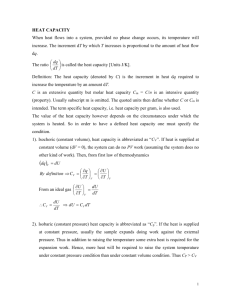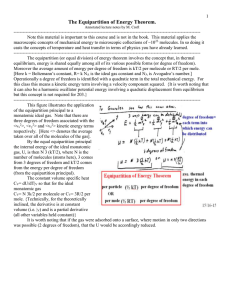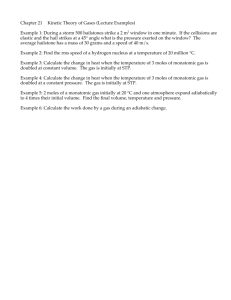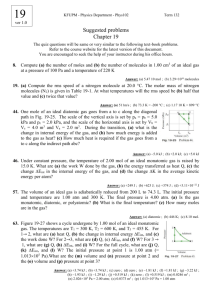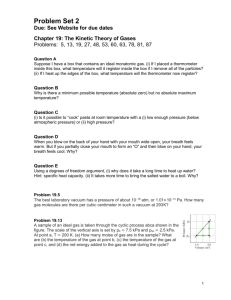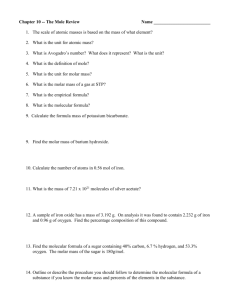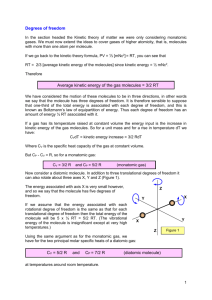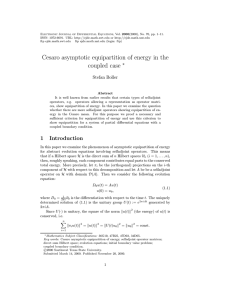Heat Capacities and the Equipartition Theorem
advertisement
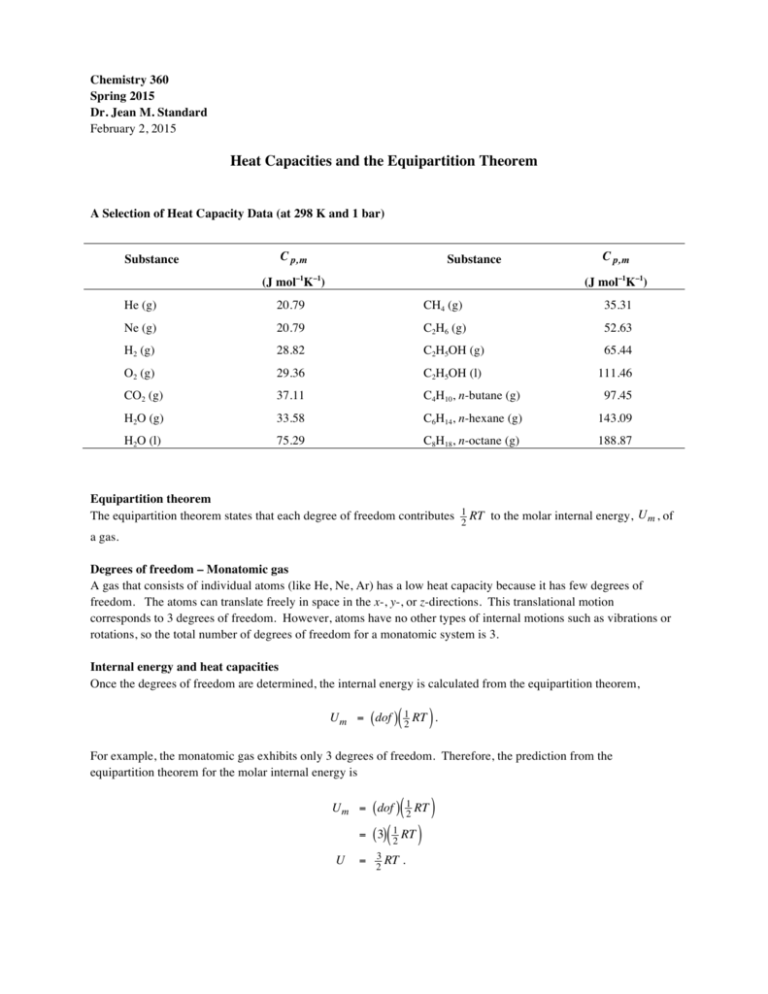
Chemistry 360 Spring 2015 Dr. Jean M. Standard February 2, 2015 Heat Capacities and the Equipartition Theorem A Selection of Heat Capacity Data (at 298 K and 1 bar) C p, m Substance C p, m Substance (J mol–1K–1) He (g) (J mol–1K–1) 20.79 CH4 (g) Ne (g) 20.79 C2H6 (g) 52.63 H2 (g) 28.82 C2H5OH (g) 65.44 O2 (g) 29.36 C2H5OH (l) 111.46 CO2 (g) 37.11 C4H10, n-butane (g) 97.45 H2O (g) 33.58 C6H14, n-hexane (g) 143.09 H2O (l) 75.29 C8H18, n-octane (g) 188.87 € € 35.31 Equipartition theorem The equipartition theorem states that each degree of freedom contributes 12 RT to the molar internal energy, U m , of a gas. Degrees of freedom – Monatomic gas € € A gas that consists of individual atoms (like He, Ne, Ar) has a low heat capacity because it has few degrees of freedom. The atoms can translate freely in space in the x-, y-, or z-directions. This translational motion corresponds to 3 degrees of freedom. However, atoms have no other types of internal motions such as vibrations or rotations, so the total number of degrees of freedom for a monatomic system is 3. Internal energy and heat capacities Once the degrees of freedom are determined, the internal energy is calculated from the equipartition theorem, U m = ( dof ) ( 12 RT ) . For example, the monatomic gas exhibits only 3 degrees of freedom. Therefore, the prediction from the equipartition theorem for the molar internal energy is € ( U m = ( dof ) 12 RT ( = ( 3) 12 RT U € = 23 RT . ) ) 2 The constant volume molar heat capacity C v,m can be calculated using the definition, #∂ U & C v,m = % m ( . $ ∂ T 'v € For the monatomic gas, the result is € #∂ U & C v,m = % m ( $ ∂ T 'v = C v,m = ∂ ∂T ( 23 RT ) 3 R. 2 The constant pressure molar heat capacity can then be obtained using the relation € C p,m = C v,m + R . For the monatomic gas, the result is € C p,m = C v,m + R = C p,m = 3R + 2 5 R. 2 R Substituting the value of R, the theoretical prediction for the constant pressure heat capacity of a monatomic gas is € C p,m = 52 R ( = 52 8.314 J mol–1K –1 –1 C p,m = 20.79 J mol K –1 ) . This matches the experimental values of the heat capacities of He and Ne reported in the table above. € Beyond monatomic gases For diatomic molecules along with linear and nonlinear polyatomic molecules in the gas phase, the number of degrees of freedom can be determined and therefore the theoretical internal energy and heat capacity can be predicted. In addition to the 3 translational degrees of freedom, contributions from rotational and vibrational degrees of freedom must be considered. For diatomic and linear polyatomic molecules, rotational motion contributes 2 degrees of freedom to the total, while for nonlinear polyatomic molecules, rotational motion contributes 3 degrees of freedom. For diatomic and linear polyatomic molecules, vibrational motion contributes 2(3N–5) degrees of freedom to the total, while for nonlinear polyatomic molecules, vibrational motion contributes 2(3N–6) degrees of freedom, where N is the number of atoms in the molecule. Using these prescriptions, the total number of degrees of freedom may be determined and the equipartition theorem may then be employed to determine a theoretical prediction for the molar internal energy and the heat capacities.
